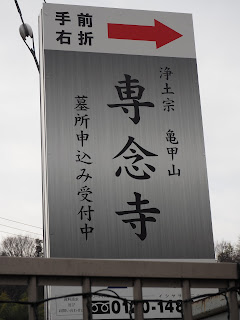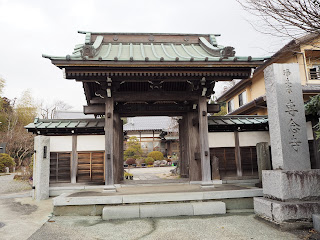Kozukue 33 Kannon Pilgrimage in My Order
The Kozukue 33 Kannon Pilgrimage was organized in 1732, far before Yokohama City was born. In those days, the Tsurumi River flooded almost every year. To memorialize the flood victims and to pray for protection from flooding, Takino Aisho wanted to organize a 33 Kannon pilgrimage, and consulted with Priest Soun in Hosho-ji Temple, the #33 temple of the Kozukue 33 Kannon Pilgrimage today. The priest, with his colleague Priest Choan, visited Priest Tenyo in Senkoku-ji Temple, the #1 temple today. The three reached an agreement and visited suitable temples in the Kozukue Domain, encouraging them to join their attempt. They succeeded in organizing 33 temples, and applied to the Tokugawa Shogunate government for the foundation of a new 33 Kannon pilgrimage.
In 1756, 24 years after its foundation, the member temples displayed their Avalokitesvara statues. Since then, the member temples have displayed their Avalokitesvara statues every 12 years, in the Year of Rat. The pilgrimage came to be also called the Zodiac Rat Year 33 Kannon Pilgrimage. 2020 is the Year of Rat.
288 years have passed. The centuries have witnessed the title of #9 being handed over from Urashima-dera Temple to Tokuon-ji Temple; #11 from Jigen-ji Temple to Shoin-ji Temple; and #23 from Mannen-ji Temple to Tokuon-ji Temple. In #33 Hosho-ji Temple, there still stands a stone monument which records us the list of the original 33 member temples.
I stepped out of Nippa Station on the Yokohama Blue Line Subway westward. I crossed the Kanagawa Prefectural Road #13 (Yokohama-Ikuta), and climbed a gentle hill for several minutes. Saiho-ji Temple had a long approach from the street to it with many old big gingko trees along the approach. Watched over by those trees, I approached the temple gate. Abruptly, I found Nothroughfare. I had to bypass a repair site. I arrived at the temple gate sideways, and noticed the gate itself was under repair. It was jacked up and was moved several meters away from the original site. The temple gate, the main hall, the Kannon-do hall, and the temple bell tower had thatched roofs. Without repair works, they must have looked quite authentic.
#15 Saiho-ji Temple
Saiho-ji Temple was founded by Priest Shoken (1138-1196) at Sasame, Kamakura, in 1190, when Minamoto Yoritomo (1147-1199) was busy establishing the Kamakura Shogunate. Shoken's father was Fujiwara Michinori (1106?-1159), who was killed by Fujiwara Nobuyori (1133-1159), who was killed by Taira Kiyomori (1118-1181), whose children were killed by Yoritomo.
Later, the temple was moved to Gokurakuji, Kamakura, where stands a stone memorial tower for the repose of Uesugi Norimasa (1335-1394). He built the tower for himself while he was still alive. Norimasa was the Regent of the Kanot Deputy Shogunate in Kamakura. His elder brother, Noriharu (?-1379), had committed suicide as a remonstrance against the military gamble Ashikaga Ujimitsu (1359-1398), the second Kanto Deputy Shogun. He tried to step in on the Koryaku Incident in Kyoto.
After witnessing many deaths, the temple was moved to Nippa, where there used to be a river port along the Tsurumi River, in 1492. The river port used to be called Niba, literally Cargo Place.
Address: 2586 Nippacho, Kohoku Ward, Yokohama, Kanagawa 223-0057
Phone: 045-531-2370
After Saiho-ji Temple, I walked down the hill, and continued to walk along the Kanagawa Prefectural Road #13.
I saw a giant Panda, or a giant Giant Panda, on my way from Saiho-ji Temple to Sennen-ji Temple.
After a long walk, I found a gravestone maker’s signboard which included the direction to Sennen-ji Temple. The maker might be worried that many visitors got lost. I barely went past the entrance alley to the temple.
#16 Sennen-ji Temple
The statue of Arya Avalokitesvara is said to have been carved by Ennin (794-864). Scientifically speaking, the statue is supposed to have been carved in the 12th century. However, it is said that Seitaro (?-1612) founded Sennen-ji Temple in 1601 and that the Kannon-do Hall was older than the temple. Anyway, they had quite big time lags. Where had the statue been for centuries?
Address: 1578 Nippacho, Kohoku Ward, Yokohama, Kanagawa 223-0057
Phone: 045-531-1518
After Sennen-ji Temple, I got on a train at Kita-Shin-Yokohama Station to Shin-Yokohama Station, from which I left Yokohama.
























0 Comments:
Post a Comment
<< Home